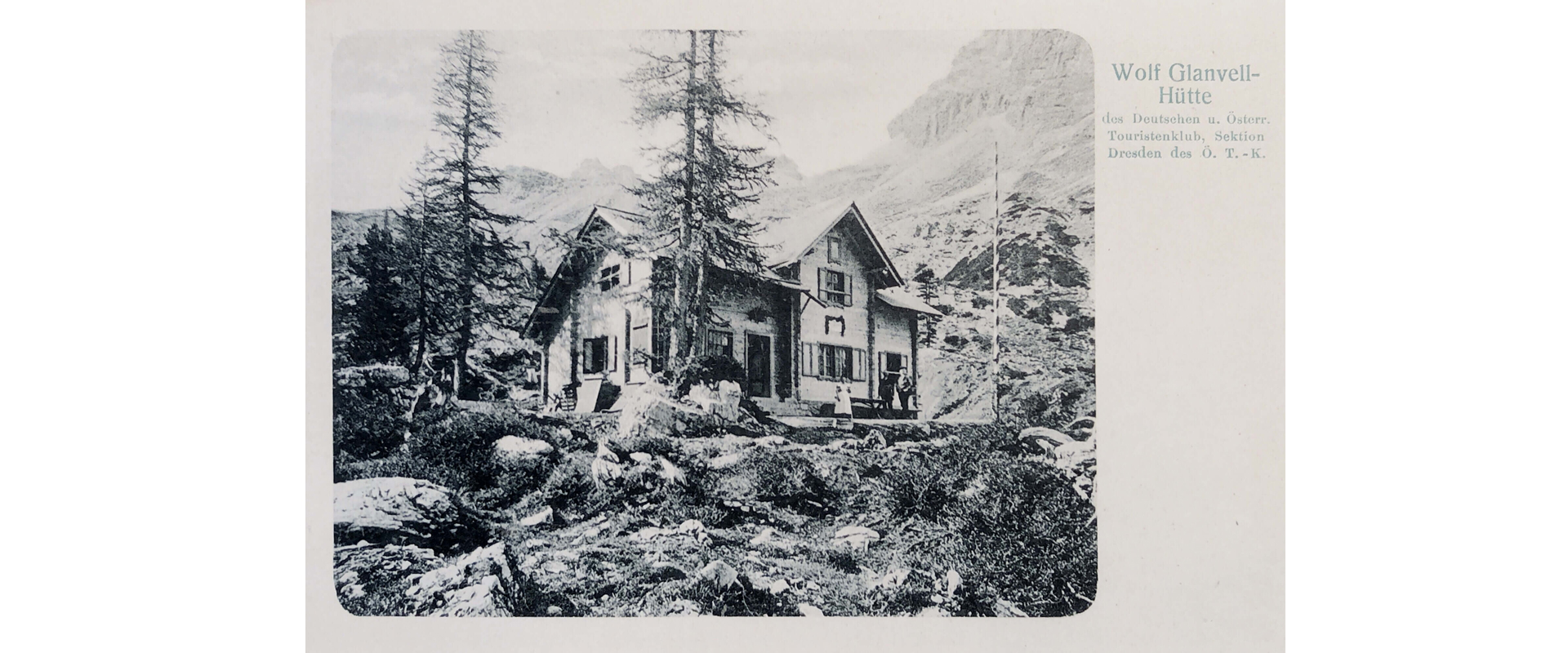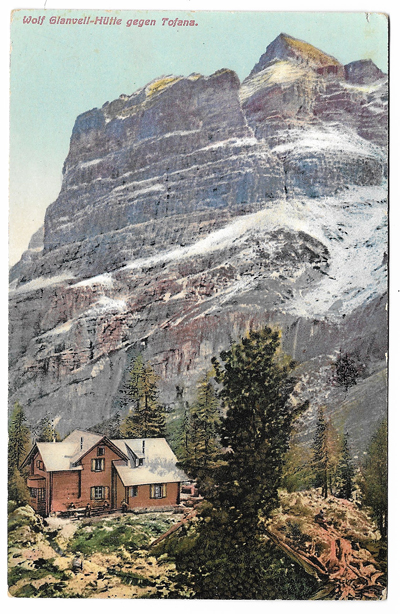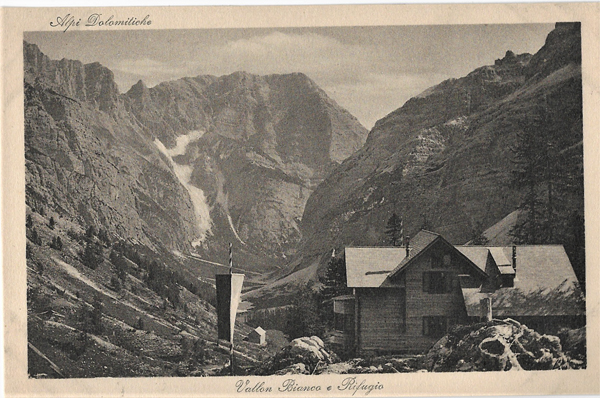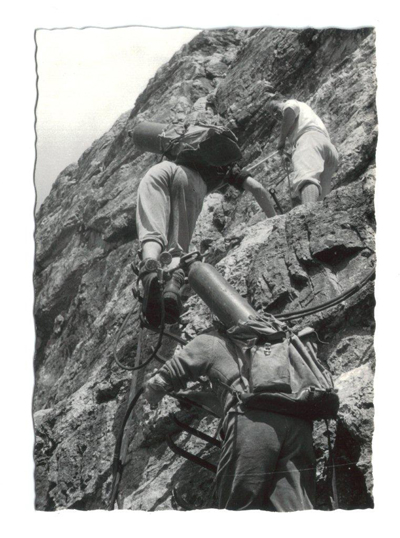
1908 Wolf-Glanvell-Hütte © www.cartolinedairifugi.it

1908 Wolf-Glanvell-Hütte © www.cartolinedairifugi.it
This refuge was named after the Austrian pioneer of mountaineering and enthusiastic Dolomite climber Viktor Wolf Edler von Glanvell, who, in 1904, with great foresight advocated in this magazine the construction of a refuge in the Travenanzes high valley in preparation for the tourism development of the Fanis and Tofana mountains.
The short history of the refuges is linked to the history of mountaineering, a story of men, rocks and achievement. Starting from here, in 1913 Adolf Deye and doctor Oskar Schuster conquered the very high north-west face of Tofana III. In 1915-16, when the hut had already been destroyed by cannon fire, war routes were traced such as the rock tower Torrione Cantore from the north saddle (Emanuele Celli and Giuseppe De Carlo) and the Camino degli Alpini on the Tofana di Rozes by Ugo di Vallepiana and Joseph Gaspard.

During the First World War, the Wolf-Glanvell refuge, which until then served as the headquarters of the military command and dressing station, was destroyed by the bombardments of the Italian artillery on August 1, 1915, and never rebuilt.

During the construction of the Wolf-Glanvell Refuge, the host and blacksmith by trade, Luigi Gillarduzzi Minighèl, had the brilliant idea of building a stairway to heaven nearby, thus overcoming a 150-meter-high vertical wall to get into the large, deep Masarè valley at the foot of the Tofana di Rozes.
It is a sort of ladder composed of 270 iron brackets, all drilled into the rock by hand. This way he de facto built the first via ferrata in the Dolomites.

During the war it was rendered impassable until the 1950s.
In the 1960s it was restored and equipped with a safety cable.
The Scala del Minighel allows climbers to reach the Forcella Fontananégra saddle from Val Travenanzes and to complete the Tofana di Rozes circuit using the Dibona refuge as a point of support for the itinerary.
